Let’s Explore Manila : Fort Santiago
After exploring the different streets of Intramuros, we headed to one of its premier tourist attractions and one of the most important historical sites in Manila, the Fort Santiago. Fort Santiago is one of the oldest fortifications in Manila which was built in 1571.
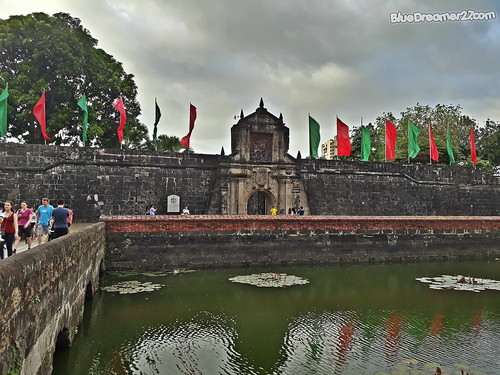 The gate of Fort Santiago has been a common sight for me because the Grand Marian procession usually held in front of this area (along the Plaza Moriones) but the last time I went inside was decades ago! I think I was in kindergarten and it was part of our Field trip and I can barely remember anything about Fort Santiago.
The gate of Fort Santiago has been a common sight for me because the Grand Marian procession usually held in front of this area (along the Plaza Moriones) but the last time I went inside was decades ago! I think I was in kindergarten and it was part of our Field trip and I can barely remember anything about Fort Santiago.
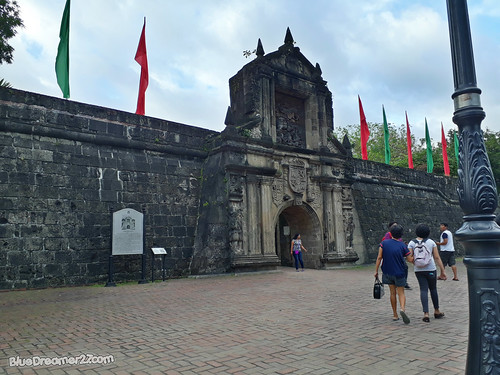 The first fort was built from logs and earth but was destroyed in Limahong Attack in 1574. The Stone fort was built between 1589 to 1592. Much like any of the defensive structures in Intramuros, the Fort Santiago was also destroyed during the Battle of Manila. Many people were imprisoned here during the Spanish period and the second world war and many lives were lost here as well. Even our national hero , Dr Jose Rizal was imprisoned here before his execution in 1896.
The first fort was built from logs and earth but was destroyed in Limahong Attack in 1574. The Stone fort was built between 1589 to 1592. Much like any of the defensive structures in Intramuros, the Fort Santiago was also destroyed during the Battle of Manila. Many people were imprisoned here during the Spanish period and the second world war and many lives were lost here as well. Even our national hero , Dr Jose Rizal was imprisoned here before his execution in 1896.
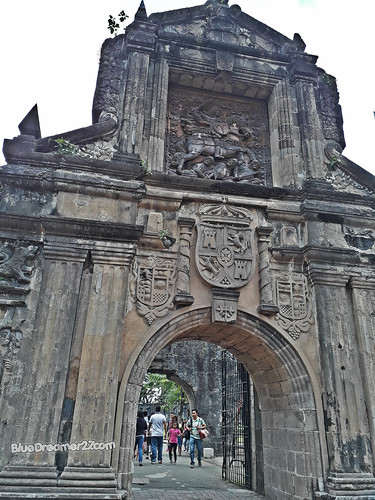 The gate of Fort Santiago was one of the structures that was utterly destroyed but was reconstructed and renovated to place it back to its former glory. The 40ft high gate was adorned with many notable details. The top most portion lies the image of Saint James (Santiago in Spanish) where the fort was named after. Under the image of Saint James is the Coat of Arms of Spain.
The gate of Fort Santiago was one of the structures that was utterly destroyed but was reconstructed and renovated to place it back to its former glory. The 40ft high gate was adorned with many notable details. The top most portion lies the image of Saint James (Santiago in Spanish) where the fort was named after. Under the image of Saint James is the Coat of Arms of Spain.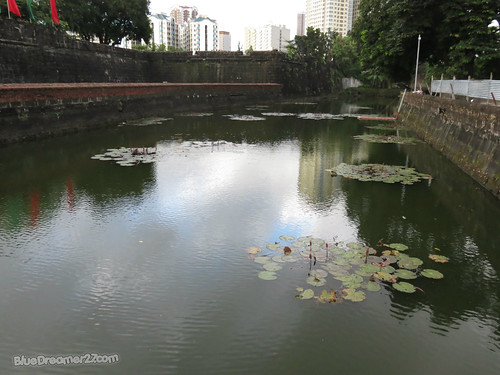 Outside the gate, you’ll find a moat which passes through the Pasig River
Outside the gate, you’ll find a moat which passes through the Pasig River
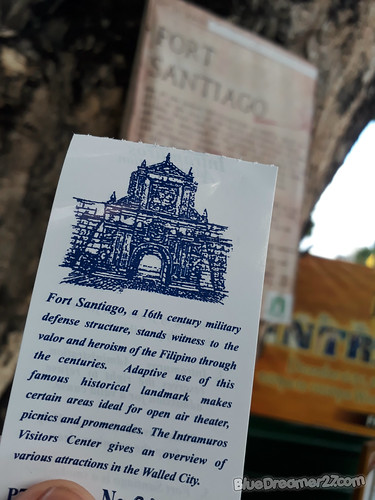 Unlike the other Baluarte in Intramuros, the Fort Santiago is not freely accessible. There is an entrance fee of Php75 per head and I think it is very reasonable considering that they are constantly making efforts to restore and preserve the place.
Unlike the other Baluarte in Intramuros, the Fort Santiago is not freely accessible. There is an entrance fee of Php75 per head and I think it is very reasonable considering that they are constantly making efforts to restore and preserve the place.
BALUARTILLO AND REDUCTO DE SAN FRANCISCO JAVIER
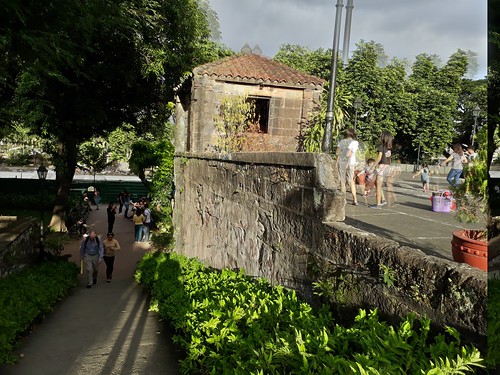 The Plaza Moriones was currently under construction when we went there but the first structure that you will notice after passing through the ticket booth is the Baluartillo and Reducto De San Francisco Javier
The Plaza Moriones was currently under construction when we went there but the first structure that you will notice after passing through the ticket booth is the Baluartillo and Reducto De San Francisco Javier
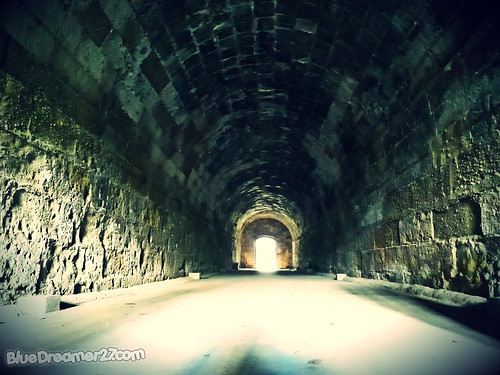 Underneath the Baluartillo is a tunnel that is supposed to take you to the Reducto De San Francisco Javier. I’m not sure if the tunnel is publicly accessible but there seem to be another way going to the reducto where the Shrine of Our Lady of Guadalupe is located.
Underneath the Baluartillo is a tunnel that is supposed to take you to the Reducto De San Francisco Javier. I’m not sure if the tunnel is publicly accessible but there seem to be another way going to the reducto where the Shrine of Our Lady of Guadalupe is located.
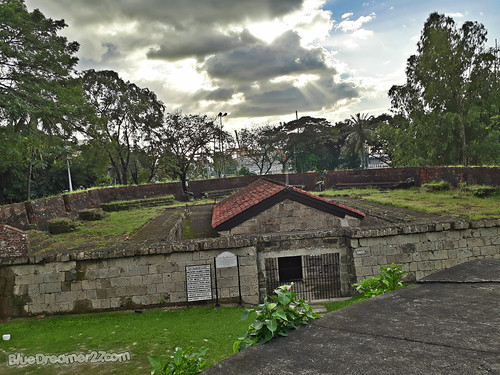 You can get a great top view of the Reducto De San Francisco Javier on top of the Baluartillo
You can get a great top view of the Reducto De San Francisco Javier on top of the Baluartillo
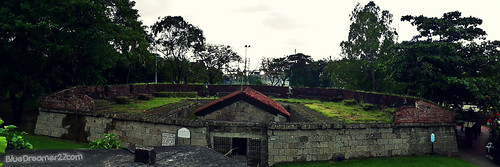 The Shrine of Guadalupe is located at the center while the entire place is surrounded by thick walls and cannons facing the Pasig river.
The Shrine of Guadalupe is located at the center while the entire place is surrounded by thick walls and cannons facing the Pasig river.
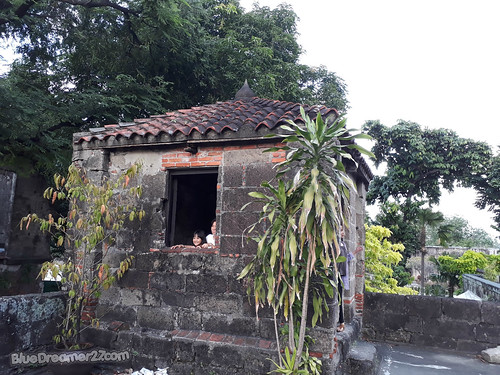 One of the accessible areas on top of the baluartillo
One of the accessible areas on top of the baluartillo
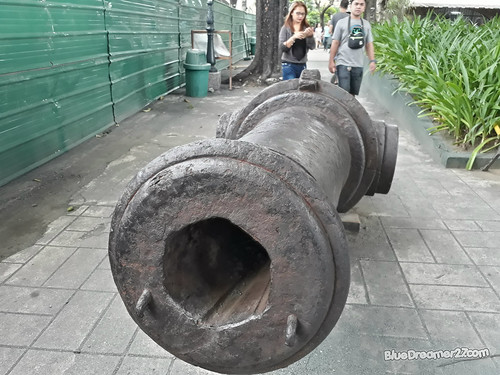 Walking along the side walks across the Plaza Moriones, you’ll spot some old and rusty canons on display
Walking along the side walks across the Plaza Moriones, you’ll spot some old and rusty canons on display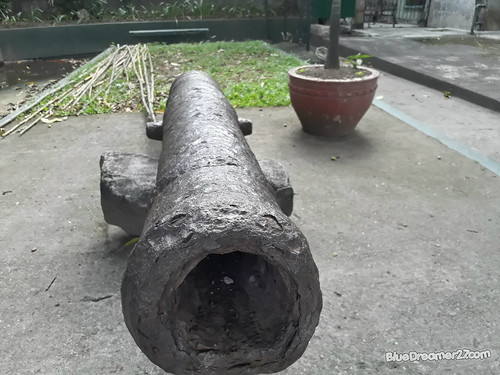
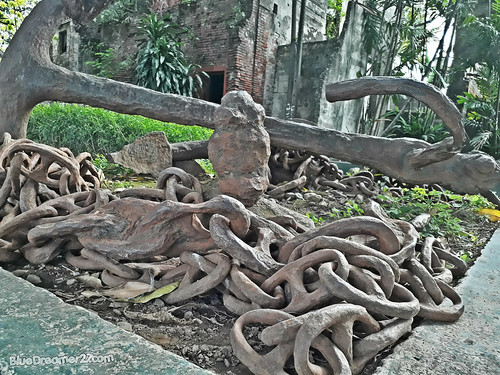 I also spotted an Anchor near the Picnic Area
I also spotted an Anchor near the Picnic Area
RUINS OF THE AMERICAN BARRACKS
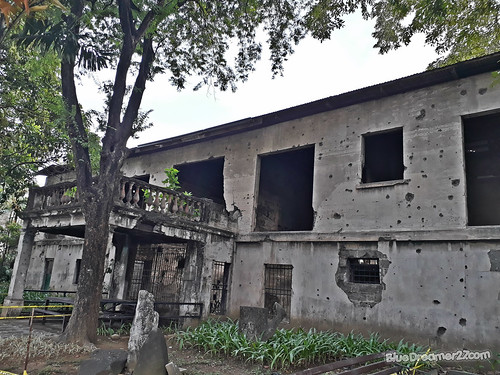 Another interesting spot in Fort Santiago are the ruins of American barracks. It is basically an abandoned building and there’s really nothing much to see inside. It is not publicly accessible either so all you can do is to gaze at this historically significant structure.
Another interesting spot in Fort Santiago are the ruins of American barracks. It is basically an abandoned building and there’s really nothing much to see inside. It is not publicly accessible either so all you can do is to gaze at this historically significant structure.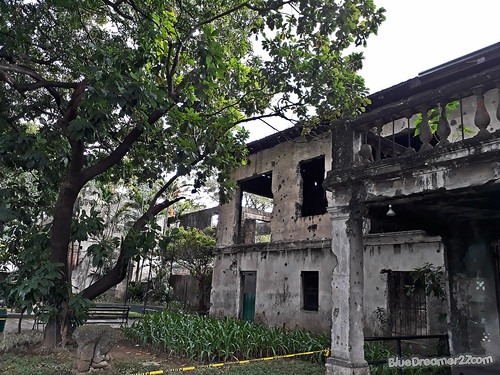 If they can only talk, they probably have so many stories to tell right?
If they can only talk, they probably have so many stories to tell right? 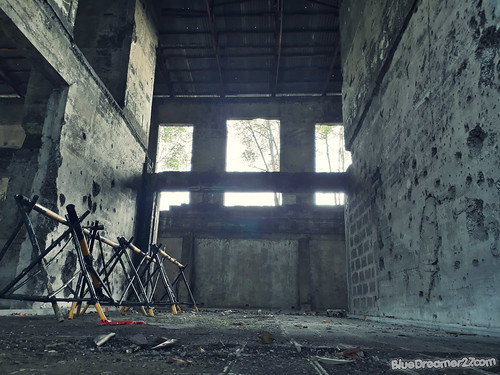 On the main gate, there’s a marker stating that senator Elpidio Quirino was imprisoned in this building for 187 days in 1948.
On the main gate, there’s a marker stating that senator Elpidio Quirino was imprisoned in this building for 187 days in 1948.
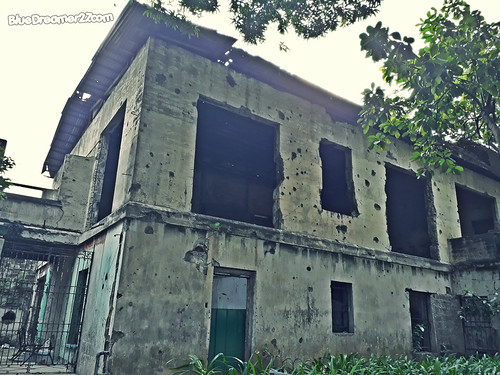
JOSE RIZAL’S LAST FOOTSTEPS
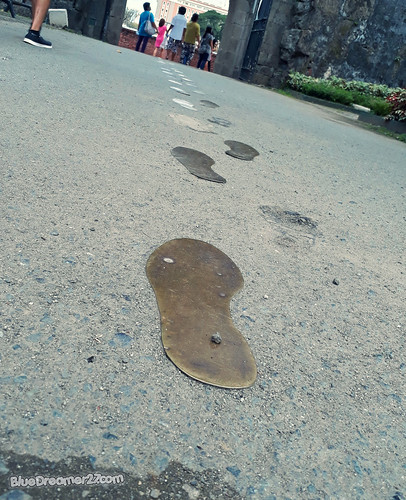 Once you entered the Fort Santiago, the first thing you will notice are the metal footsteps. These footsteps were used to represent the final walk our national hero from his cell to the location of the actual execution.
Once you entered the Fort Santiago, the first thing you will notice are the metal footsteps. These footsteps were used to represent the final walk our national hero from his cell to the location of the actual execution.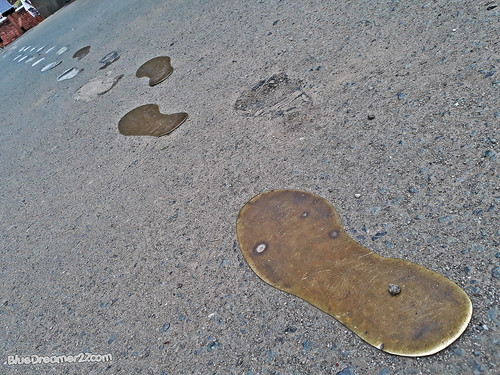 I wasn’t able to count the steps though.
I wasn’t able to count the steps though.
PLAZA DE ARMAS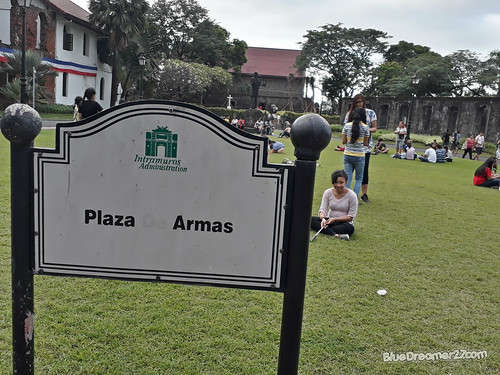 At the heart of Fort Santiago lies the spacious Plaza De Armas. It is one of two major plazas in Intramuros, the other being the central Plaza de Roma. Historical evidence may suggest that the plaza is the site where the wooden palisade of Rajah Sulayman, on top of which Fort Santiago was built, was located. The landscape of Plaza de Armas is not as colorful as Plaza Moriones (outside the Fort Santiago) and Plaza De Roma (in front of Manila Cathedral) but spacious enough to relax.
At the heart of Fort Santiago lies the spacious Plaza De Armas. It is one of two major plazas in Intramuros, the other being the central Plaza de Roma. Historical evidence may suggest that the plaza is the site where the wooden palisade of Rajah Sulayman, on top of which Fort Santiago was built, was located. The landscape of Plaza de Armas is not as colorful as Plaza Moriones (outside the Fort Santiago) and Plaza De Roma (in front of Manila Cathedral) but spacious enough to relax.
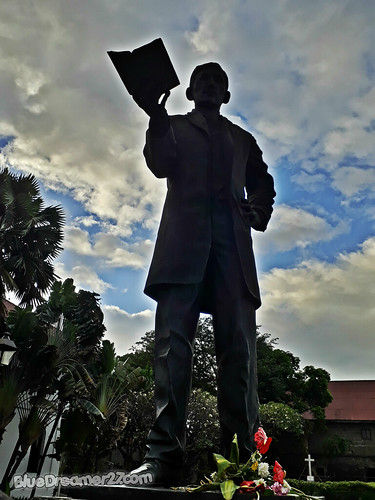
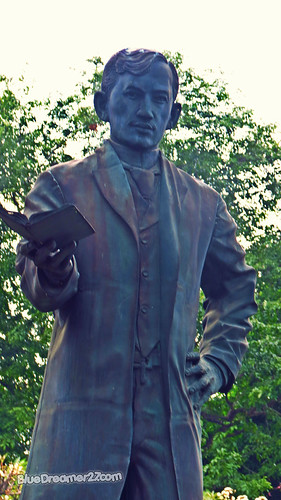 A statue of Jose Rizal at the heart of the Plaza De Armas
A statue of Jose Rizal at the heart of the Plaza De Armas
THE RIZAL SHRINE
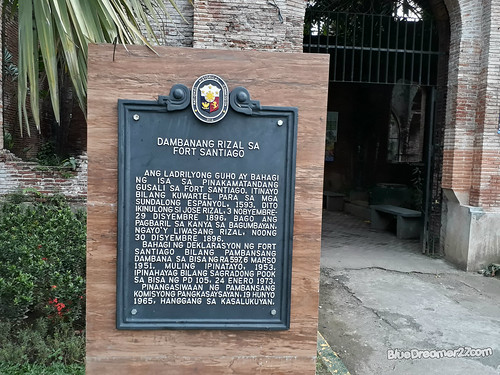 We could have explored the Rizal Shrine in full extent but unfortunately, the site was closed for holiday. We failed to get the chance to enter the shrine but we were able to enjoy looking at those brick wall (ladrillo) ruins.
We could have explored the Rizal Shrine in full extent but unfortunately, the site was closed for holiday. We failed to get the chance to enter the shrine but we were able to enjoy looking at those brick wall (ladrillo) ruins.
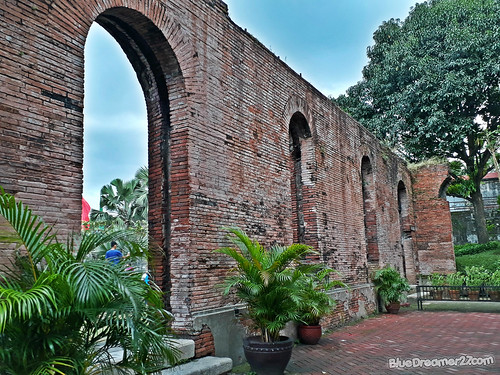 These brick walls are said to be one of the oldest structures in Fort Santiago.This is also the site where Jose Rizal was imprisoned and the place where he wrote one of his masterpiece “Mi Ultimo Adios”
These brick walls are said to be one of the oldest structures in Fort Santiago.This is also the site where Jose Rizal was imprisoned and the place where he wrote one of his masterpiece “Mi Ultimo Adios”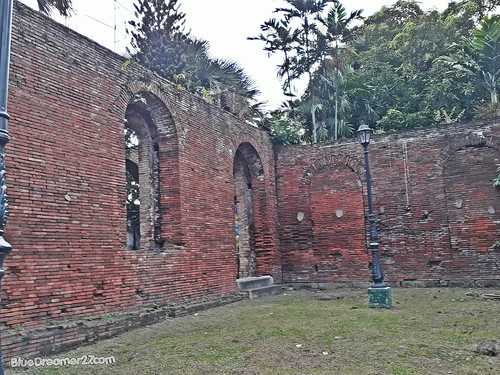
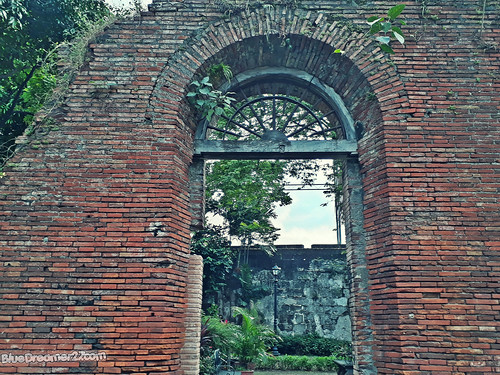
THE RAJAH SULAYMAN THEATER
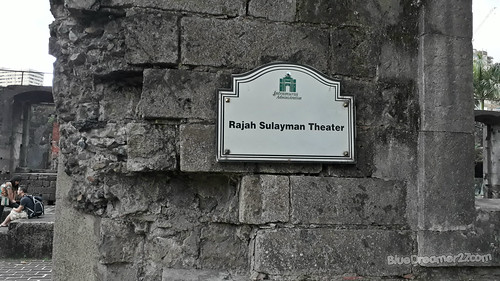 Opposite the Rizal Shrine is another interesting site. The ruins of Rajah Sulayman Theater.s an open air theater under the grounds of Fort Santiago which was ruins of a former Spanish military barracks. It had served as a highly atmospheric setting for contemporary theater-in-the-round productions by PETA (Philippine Educational Theater Association).
Opposite the Rizal Shrine is another interesting site. The ruins of Rajah Sulayman Theater.s an open air theater under the grounds of Fort Santiago which was ruins of a former Spanish military barracks. It had served as a highly atmospheric setting for contemporary theater-in-the-round productions by PETA (Philippine Educational Theater Association).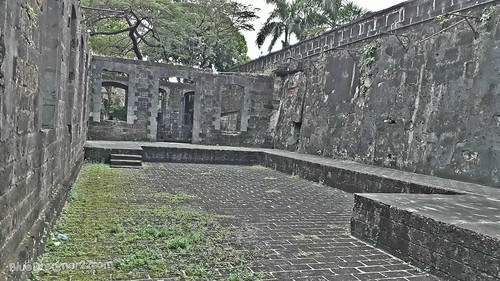 The ruins of Rajah Sulayman Theater , named in honor of the leader of the Mohammedan Malays who first inhabited the area.
The ruins of Rajah Sulayman Theater , named in honor of the leader of the Mohammedan Malays who first inhabited the area.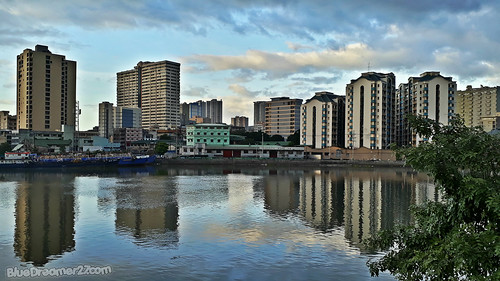 If lucky enough, you can also get a scenic view of the Pasig river
If lucky enough, you can also get a scenic view of the Pasig river
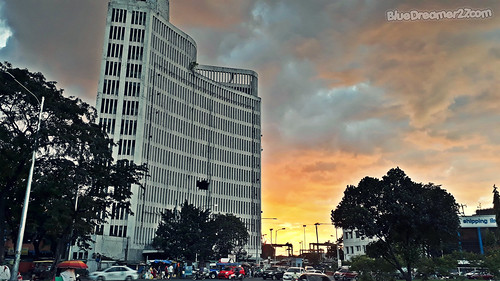 After taking a quick rest in Plaza De Armas, my brother and I decided to leave Intramuros and went to our hotel in Otis. We left Intramuros via Soriano Ave. We had an insane “kuliglig” ride going to our hotel and I will share all our experiences in my next #LetsExploreManila entry
After taking a quick rest in Plaza De Armas, my brother and I decided to leave Intramuros and went to our hotel in Otis. We left Intramuros via Soriano Ave. We had an insane “kuliglig” ride going to our hotel and I will share all our experiences in my next #LetsExploreManila entry
UPDATE: According to Intramuros Administration, Fort Santiago is now OPEN DAILY stating from 8AM to 9PM
For the mean time, you can also follow me on my Social media account for more updates
Facebook : It’s Me Bluedreamer!
Instagram : @bluedreamer1227
Twitter : @bluedreamer_27
Feel free to watch this video summary below and don’t forget to subscribe!
In case you missed an entry, here are the rest of the entries you might want to read.
LET’S EXPLORE MANILA TRAVEL SERIES
►Let’s Explore Manila Prologue
►Journey to the Past – Intramuros Part 1
►Journey to the Past – Intramuros Part 2
►The Papier Tole Souvenir Shop
►Intramuros In Black and White
►Fort Santiago
►Go Hotel Otis : A Traveler-Friendly Budget Hotel In the Metro
►Paco Park and Cemetery
►The Historical Rizal Park (Luneta Park)
►The Rizal Execution Site
►The Chinese Garden
►The Manila Zoo and the Current Condition of Mali
►Baluarte De San Andres and Baluarte De San Diego of Intramuros
►The Seven Great Churches of Intramuros
►The Manila Baywalk
You may also want to visit my past Manila-related entries
►Manila Pilgrimage Tour
►A Trip To Binondo Series
►A Day With National Museum



It’s classic but you’ll never grow tired of this. It’s appeal is something. Sana lang the surrounding and the way going there is safe and clean.